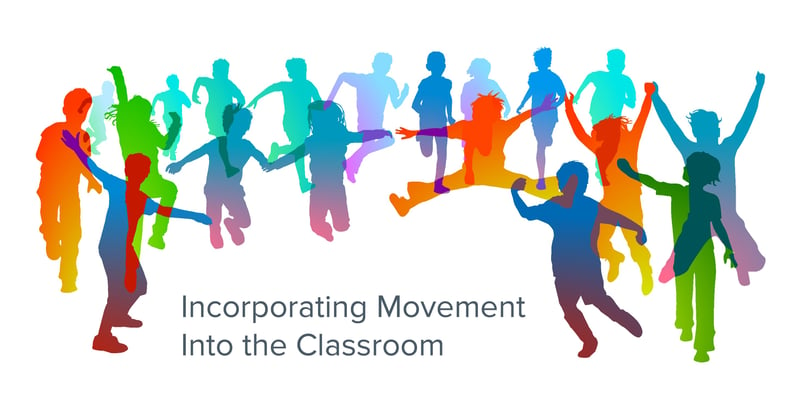
Over the past few years, more research has been done on the effects of movement and exercise on the brain. In recent images of brain scans that have been taken during 20 minutes of sitting quietly and 20 minutes of walking, there is a much higher level of brain functionality following the walking. We know that blood flow helps brain waves and brain function, and body movement helps blood flow.
If we want our students to be thinking, we need them to not sit for long periods of time. This can be challenging—sometimes students can be very wiggly and any type of movement around the room can disrupt the environment. Movement has to be taught, and there should be clear routines and procedures in place in order to make it effective for the learners.
Get Moving!
Here are some simple, easy, and quick ways to get students moving for brief periods throughout the instructional time:
1. Movement During a Student ResponseHave students respond to a question or prompt by moving instead of just speaking or writing. For example, if they know the answer, they could:
- Stand on one leg.
- Stretch their hands up as high as they can up over their head.
- Walk to a corner of the room (could be multiple choice with an option in each corner).
- Stand up and do 3 jumping jacks.
- Rub their hands together.
- Sit on the floor.
You get the idea. These don’t take any more work or time than raising hands. If you are a teacher who doesn’t like to have students raise hands and call on students randomly, the same sorts of tools can be used—just individualize with the students.
2. Movement During Independent WorkEven though it seems a little counterintuitive, having students move while they should be working independently is a great idea. When it is time for students to work independently, there are different strategies for students to move while doing so.
- The teacher can post independent work and creative locations. For example, the 10 questions on the quiz can be posted individually around the room and students could use a clipboard to circle around and answer the different questions. This gets them moving, walking, and thinking, but also gets the quiz accomplished. For many of our students, this is much better than just sitting at a desk.
- If/when students need help, they can move around the room to get it. This could be moving to the teacher or moving to a location (like the IWB) to put their name on the list to get help. Instead of sitting in a stationary position, students can get a little movement break in as they wait for assistance.
These are just a few creative ways to get students moving while they are working on their own. Movement doesn’t necessarily need to be noisy—if teachers plan to use these structures, they need to provide clear expectations about behavior and classroom climate.
3. Movement During Classroom DiscussionThese are strategies that teachers can use when students are having a class discussion. Even though movement can sometimes be loud or distracting, these ideas can keep the discussion focused while allowing students to move.
- The discussion could involve a game or a ball. For example, if all students stand in a circle and whoever is speaking has to be holding the ball, students could bounce the ball across the circle to each other. It can work like a talking stick, where the only person talking is the person with the ball.
- Another idea would be to toss a bean bag from one speaker to another. This could happen like the ball, but in smaller groups passing the bean bag around more quickly. Bean bags are better for activities like this because the balls could (would) be flying around the room. Think of something like practicing math facts or spelling words—the rapid pace of tossing the bean bag from speaker to speaker keeps students engaged and thinking quickly.
- Any type of “mixing” activities are great for classroom discussion, too. Students can circulate around and mingle until the teacher prompts them to stop. The students can question each other, getting their knowledge activated and learning from one another at the same time. After a few rounds of this, the whole group class discussion could be much richer and deeper, plus the students have been up and moving.
All of these facilitate discussion just like if they were sitting on their desk, but they include a component of engagement and fun along with movement.
As students move more in your classroom, they will think and perform better than ever. Want even more ideas for getting your students moving? Be sure to check out our indoor recess blog, which has same great recommendations for indoor movement.